The graph between (P/T) and T for a gas at constant volume will be:
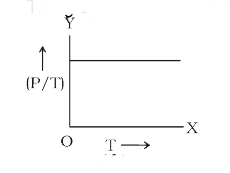
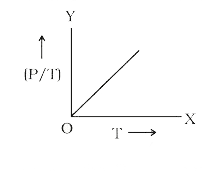
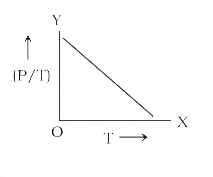
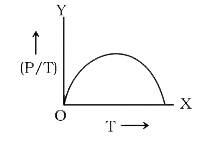
The correct Answer is:A
To solve the problem of determining the graph between PT and T for a gas at constant volume, we can follow these steps:
Step 1: Understand the Ideal Gas Law
The ideal gas law is given by the equation:
PV=nRT
where P is the pressure, V is the volume, n is the number of moles, R is the gas constant, and T is the temperature.
Step 2: Identify the Given Condition
In this problem, we are told that the volume V is constant. This means that for a given amount of gas, the number of moles n and the gas constant R are also constant.
Step 3: Rearranging the Ideal Gas Law
Since V is constant, we can rearrange the ideal gas law to express pressure P in terms of temperature T:
P=nRTV
Step 4: Express PT
Now, we can express PT:
PT=nRV
This shows that PT is constant because n, R, and V are all constants.
Step 5: Graphing PT against T
Since PT is constant, when we plot PT on the y-axis against T on the x-axis, we will get a horizontal line. This indicates that regardless of the temperature T, the value of PT remains the same.
Conclusion
Thus, the graph between PT and T for a gas at constant volume will be a horizontal line.
---
The ideal gas law is given by the equation:
PV=nRT
where P is the pressure, V is the volume, n is the number of moles, R is the gas constant, and T is the temperature.
In this problem, we are told that the volume V is constant. This means that for a given amount of gas, the number of moles n and the gas constant R are also constant.
Since V is constant, we can rearrange the ideal gas law to express pressure P in terms of temperature T:
P=nRTV
Now, we can express PT:
PT=nRV
This shows that PT is constant because n, R, and V are all constants.
Since PT is constant, when we plot PT on the y-axis against T on the x-axis, we will get a horizontal line. This indicates that regardless of the temperature T, the value of PT remains the same.
Thus, the graph between PT and T for a gas at constant volume will be a horizontal line.
Similar Questions
The molar heat capacity of a perfect gas at constant volume is Cv. The gas is subjected to a process T=T0eAV, Where T0 and A are constant. Calculate the molar heat capacity of the gas a function of its volume
View SolutionThe graph between pressure P and volume V for a given mass of a gas a fixed temperature T is a ________ .
View Solution
Knowledge Check
- Question 1 - Select One
The graph between L and T2 is
A B
B C
C D
D
- Question 2 - Select One
The graph between L and T2 is
A B
B C
C D
D
- Question 3 - Select One
The ideal gas equation for 1 mol of ideal gas is PV = nRT
graph between P and T at constant volume, i.e. isochores are plotted as under
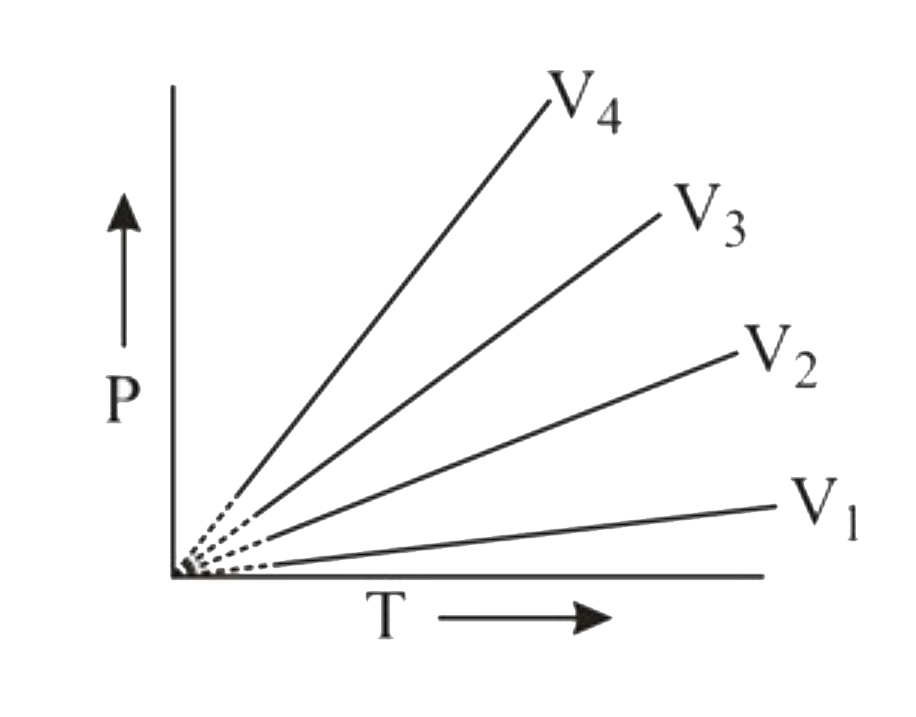
Which of the following order of volume is correct ?AV4>V3>V2>V1BV1>V2>V3>V4CV1=V2=V3=V4DV2>V1>V3>V4
A plot of P vs T for a given mass of gas at constant volume is a straight line . P vs T at constant volumes V1 and V2 for an ideal gas are shown below :
Which of the following is correct ?
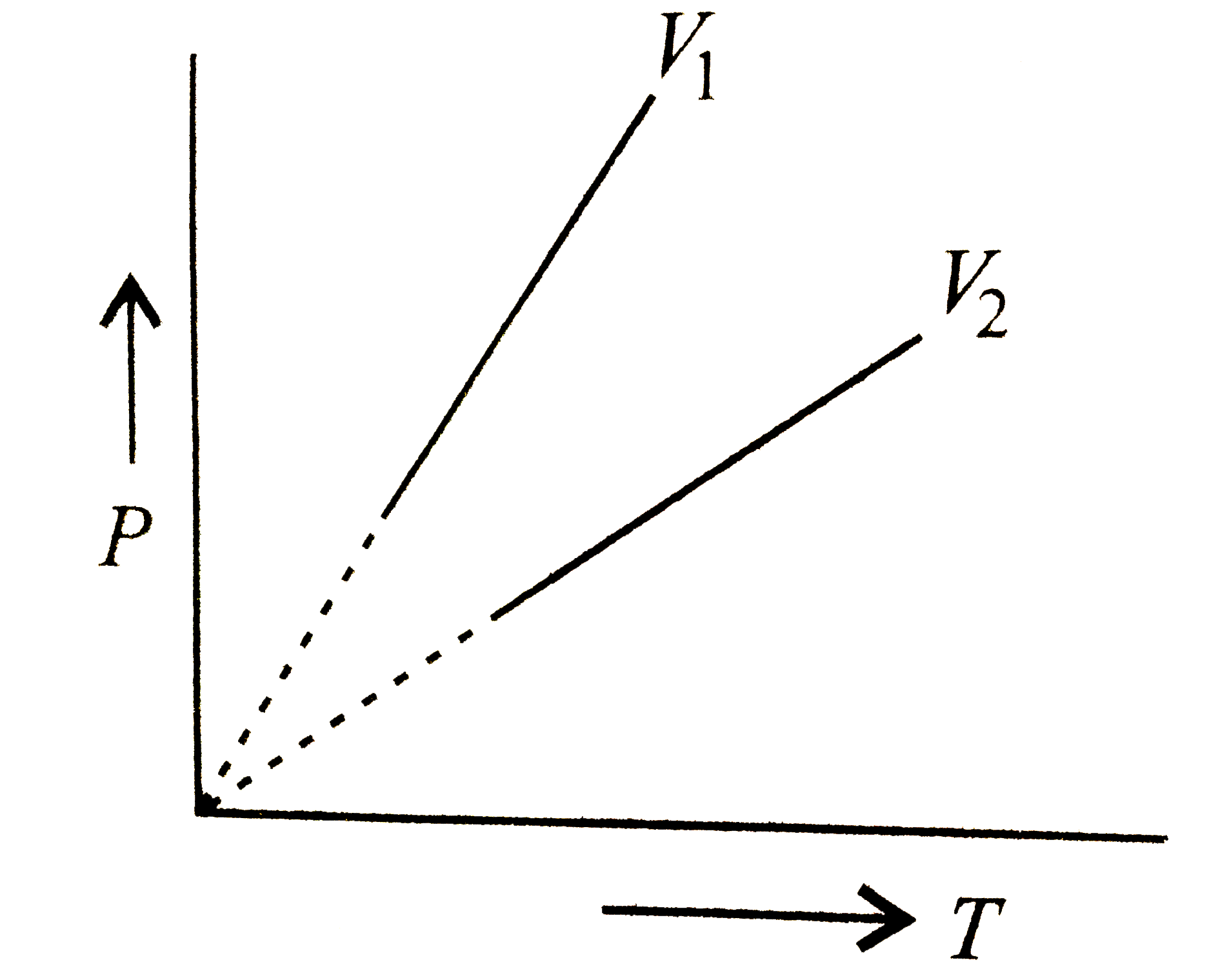 View Solution
View SolutionGiven is the graph between PVT and P for 1 gm of oxygen gas at two different temperatures T1andT2 Fig. Given, density of oxygen =1.427kgm−3. The value of (PV)/(T) at the point A and the relation between T1andT2 are respectively :
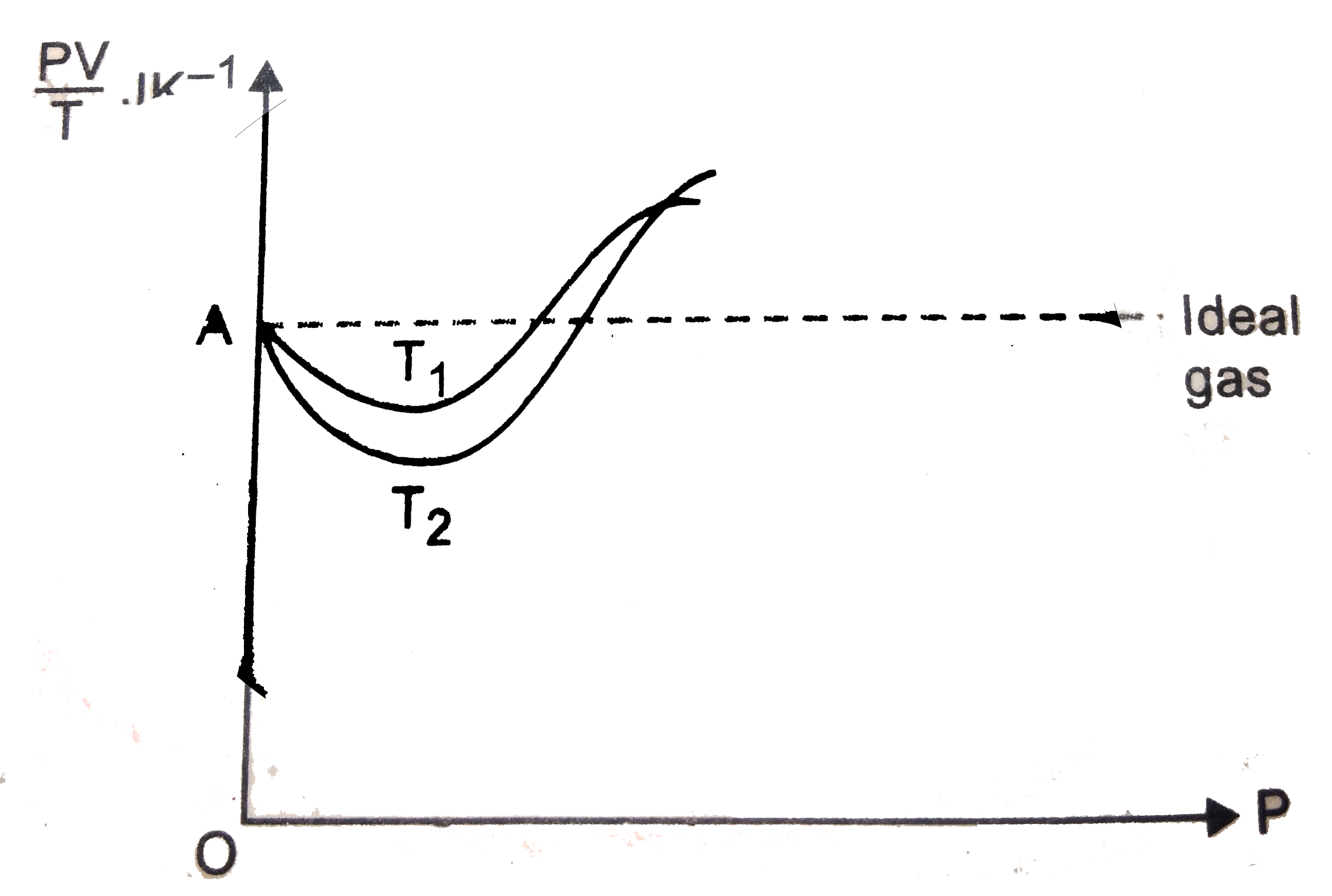 View Solution
View SolutionIf P is doubled and T is reduced to half at constant volume, what will be its effect on the mean free path (λ) of a gas molecule?
View SolutionThe molar heat capacity for a gas at constant T and P is
View SolutionThe molar heat capacity for a gas at constant T and P is
View Solution

